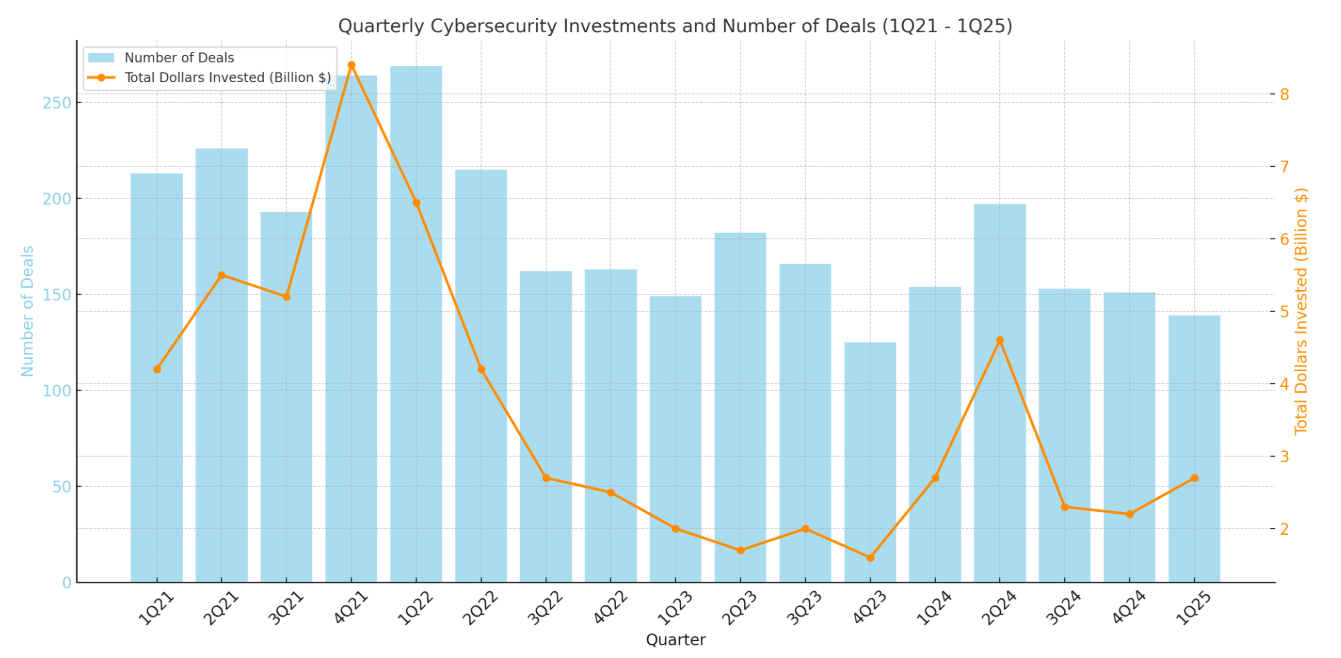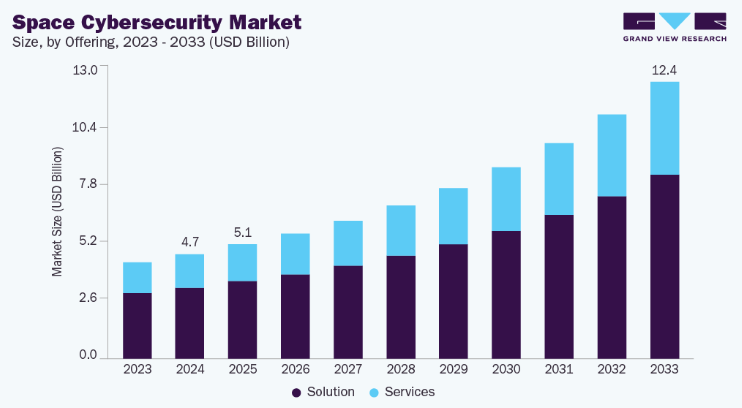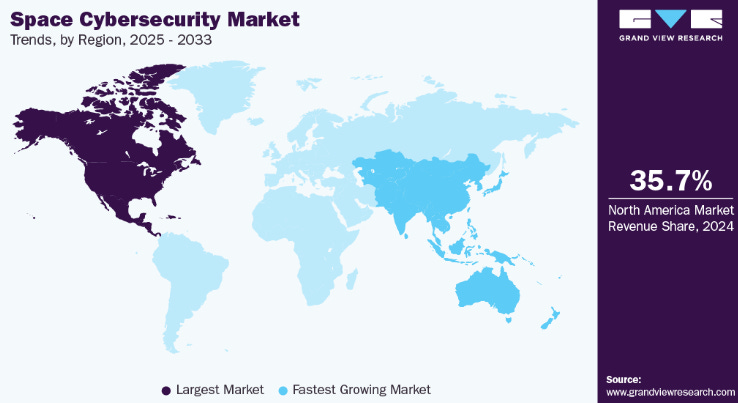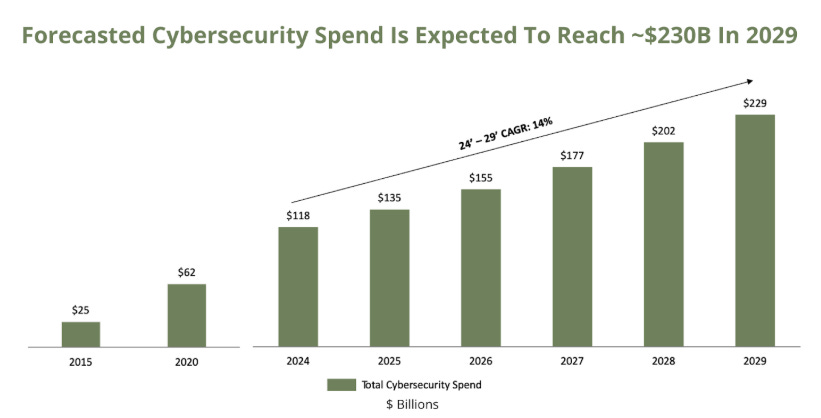Cybersecurity in Orbit: Why Space Security Matters to Everyone on Earth
What happens when the next big cyberattack doesn’t hit your laptop — but a satellite orbiting 1,000 kilometers above it?
Imagine a world where your internet, GPS navigation, or even national security could be compromised by a cyberattack thousands of kilometers above us. That’s the new reality we face as the space economy grows. Even though space might seem far away, the satellites and systems orbiting Earth directly impact the services we rely on every day — from finding directions on your phone to emergency communications. When these space assets are attacked, it can disrupt our daily lives in very real ways.
From satellite mega-constellations enabling global broadband, to national defense systems orbiting above the Earth, the infrastructure that powers the space age is increasingly software defined and networked. In this shifting landscape, cybersecurity is no longer a terrestrial concern. Space based assets are becoming high value targets for cyberattacks, espionage, and interference. In 2022, the hack of ViaSat’s KA-SAT network during the early hours of the Ukraine conflict was a wake-up call: space systems are squarely in the cyber battlespace. That incident was a stark reminder: space is no longer a distant, untouchable frontier — it’s a critical part of our everyday lives and a battlefield for cyber warfare.
With the rising risks, however, also comes rising opportunities. A new market is continuing to emerge at the intersection of aerospace and cybersecurity, and several startups are at the forefront, building technologies to defend satellites, encrypt communications, detect anomalies, and harden overall ground level infrastructure.
This article looks at the growing need for cybersecurity in space — what’s causing the risks, the tools being developed to stop them, and why investors are starting to take notice.
Assets Under Risk: What’s Actually Vulnerable in Space?
As space systems become more connected and digital, there are more ways hackers can cause problems. Here’s what could be targeted and why it matters:
Satellites and Space Gear: Satellites handle communications, GPS, weather, and military missions. If hackers take control or tamper with onboard software, they can steal data, disrupt services, or even disable satellites.
Ground Control: The people and computers on Earth that control satellites are a major target. If hackers break into control centers, they could send fake commands or disrupt operations. Networks used by these centers can also be attacked with malware or overwhelmed by cyberattacks.
Communication Links: Satellites and ground stations communicate through signals that can be jammed, intercepted, or spoofed. If one satellite in a network is hacked, it can put the entire system at risk.
Supply Chain Risks: Problems can start before launch. Malicious chips or software can be inserted during manufacturing or updates, creating hidden backdoors for attackers.
People and Users: Sometimes hackers target people directly, tricking employees or insiders to gain access. Since many rely on satellite data for everyday use, attacks can impact things like internet, navigation, and national security.
The Expanding Space Cybersecurity Market And Market Drivers:
In the space economy, we can see an increasing commercially driven ecosystem, fostering greater connectivity but also bringing more cybersecurity risks. Just like your smartphone relies on constant security updates to stay safe, satellites and ground systems need similar—and often more complex—protections in orbit.
In 2024, the global space cybersecurity market was valued at $4.7 billion according to Grand View Research, while analysts expect this market will grow to nearly $8 billion by 2029 and surpass $12 billion by 2033, reflecting a decent CAGR of 9 to 12 percent.
This growth is fueled by the surge in satellite developments, vastly expanding the digital attack surface exposed to cyber threats around the globe.
Beyond overall market growth, key drivers fueling expansion include:
Increasing LEO satellite constellations: More satellites in low Earth orbit mean more targets for cyberattacks — every satellite is a possible weak spot.
Digital transformation: Space systems are now powered by software, cloud tech, and automation, which opens up more ways hackers can get in.
Geopolitical cyber threats: Countries are actively targeting space infrastructure as part of their cyber warfare strategies.
Regulatory pressure: Governments are cracking down with tougher cybersecurity rules for everyone involved in space operations.
Commercialization of space: And with more private companies entering the space race — many with different levels of cybersecurity readiness — the whole ecosystem faces bigger risks.
In 2024, government and military customers made up about 76% of the space cybersecurity market, showing how important they are in this field. However, private companies are investing more and more as commercial space activities grow and civilian and government systems become more connected.
Satellite communications, worth $2.5 billion in 2024, is the biggest area of use, followed by Earth observation, navigation, and space exploration. This means cybersecurity isn’t just a government concern anymore — as space-based internet and services reach more homes and businesses, protecting these systems becomes something everyone relies on.
Regionally, North America leads with 35.7% of global revenue due to U.S. defense and commercial adoption. Asia-Pacific is the fastest-growing, with China, India, and Japan heavily investing in space capabilities and cybersecurity. Europe is also rising (10.8% CAGR through 2033). These drivers and trends point to a strong market trajectory where cybersecurity will become a defining pillar of space infrastructure, fostering both protection and new innovation and investment opportunities.
Cyber Risks to Space Assets
To meet these growing threats, the space industry is shifting toward a zero-trust security mindset, where no user, device, or system is automatically trusted. Think of Zero Trust like a security guard at a concert who checks everyone—even regulars—before letting them in, ensuring no one sneaks through unnoticed. This approach is especially critical for space missions, where the cost of a breach could be measured in lost satellites, mission failure, or disrupted national services.
At the same time, public-private collaboration is becoming essential. Governments are tightening cybersecurity regulations for space operators and contractors, while private companies are investing in advanced tools to harden systems before launch. Initiatives such as the U.S. Space Systems Command’s Cybersecurity Infrastructure Resilience (CIR) and the European Space Agency’s Cyber-Satcom initiative signal the recognition of space as a contested digital domain.
Looking ahead, cybersecurity could be embedded into the entire lifecycle of space systems—from supply chain and design to launch and operations. This includes:
Real-time anomaly detection
End-to-end encryption
Continuous software updates
AI-driven threat monitoring
Redundancy planning for communications and data routing
Ultimately, the resilience of space infrastructure will depend not just on physical durability, but on cyber resilience. In an era where satellites power economies, militaries, and critical services, defending them in cyberspace is no longer optional—it’s mission-critical.
Pioneering Protection: Innovative Cybersecurity Solutions for Space
As cyber threats to space systems increase, the industry is rapidly developing new ways to defend these critical assets. Some companies are deploying advanced technologies such as:
Quantum Encryption
Zero Trust Security Models
End-to-End Encryption & Secure Operations
Here are more details about each with companies working on it:
Quantum Key Distribution (QKD): The Future of Secure Space Communications
Quantum Key Distribution is a breakthrough technology that protects data against future quantum computers, which could otherwise break current encryption methods. By generating and sharing encryption keys that are nearly impossible to hack, QKD ensures highly secure communications. Tom Barton, CEO & Co-Founder of Antaris, highlights how this technology is being brought into space:
“SpeQtral’s compact and ruggedized quantum payloads will facilitate highly secure encryption key delivery that can mitigate against the imminent quantum cybersecurity threat. This can be applied across a wide range of applications including satellite command, control, and data downlink, as well as traditional Satcom or terrestrial communications.”
— Tom Barton, CEO & Co‑Founder of Antaris, source: Speqtral
Speqtral raised $13.9 million across more rounds.
Zero Trust Architecture: Trust No One, Verify Everything
Zero Trust Architecture (ZTA) moves away from perimeter-based security and assumes no implicit trust within a system. It enforces strict identity verification, continuous monitoring, and least-privilege access—critical for protecting distributed space systems where any breach can spread rapidly.
U.S. Space Force is adopting ZTA in partnership with companies like Xage Security, which specializes in identity-centric cybersecurity for space and terrestrial infrastructure. Xage’s mesh-based architecture enforces access control and segmentation, even in disconnected or contested environments.
Company Highlight:
Xage Security raised over $81 million across several rounds and counts the U.S. Space Force and NASA among its partners.
End-to-End Encryption & Secure Operations
End-to-end encryption ensures that data remains protected from the moment it is created—onboard a satellite—all the way to ground control. This approach is essential to protect sensitive data and operations in space, especially as missions become more autonomous and cloud-integrated.
Epsilon3 is transforming mission operations by replacing legacy checklists and communication tools with secure, version-controlled digital workflows. Their platform meets high-security standards including SOC 2, ISO 27001, FedRAMP, and ITAR, making it ideal for managing sensitive satellite operations.
Company Highlight:
Epsilon3 has raised $18.8 million and is used by Rocket Lab, Blue Origin, and the U.S. Space Force to securely coordinate space missions.
Additional Innovations
RunSafe Security: Software hardening techniques to increase satellite resilience post-launch
Modular Satellite Designs: Enabling in-orbit servicing and upgrades to combat obsolescence
End-to-End Encryption: A foundational element ensuring secure data transmission from satellite to ground
These companies aren’t just creating technology; they’re building the shields that protect our satellites—and by extension, our connected world.
Cybersecurity Investor Landscape
Here are some parties specializing in frontier space technologies and national security applications.
Space-Focused VCs
These investors specialize in frontier space technologies and national security applications. They back companies developing innovative space solutions, such asCybersecurity Specialists
Firms like Ballistic Ventures bring deep cybersecurity expertise tailored to protect space systems. They invest in startups developing advanced cyber defenses specifically designed for the unique challenges of space infrastructure.Dual-Use & Defense Tech Investors
Groups such as Harpoon Ventures, Cybernetix, and In-Q-Tel focus on companies working at the intersection of AI, robotics, and defense technologies with clear applications in space. They target innovations that serve both commercial and military needs.Core Infrastructure Investors
Investors including Seraphim Capital, Scout Ventures, and Lux Capital provide capital to startups building the essential space infrastructure—satellite platforms, secure communications, and cybersecurity tools—that underpin the space economy.
While there isn't a dedicated source specifically tracking cybersecurity space tech deals, overall quarterly investment trends can be seen in the graph below. As with a slowdown in overall VC activity, there isan evident slowdown in cybersecurity VC investments in 2022 & 2023. But this might change in 2024 & 2025 as can be seen slight changes already starting in the graph.

Below is a graph projecting global cybersecurity spending growth through 2029 as spending highlights the increasing importance and scale of cybersecurity investments as digital threats continue to grow worldwide.
Conclusion
The final frontier’s security isn’t just a tech challenge—it’s a shared responsibility. With collaboration, smart investment, and innovation, we can protect the space systems that have become the backbone of modern life and open new horizons for generations to come.
Space has become essential to how we live, work, and defend our nations — and that makes it a prime target for cyberattacks. From the GPS guiding your car to satellites enabling global internet and military operations, the risk is real and growing.
Cyber threats like jamming, spoofing, and supply chain breaches are no longer theoretical. Incidents like the Viasat hack show how quickly these risks can disrupt real-world infrastructure. The stakes are rising, and the attack surface is expanding with every new launch.
But there’s momentum on the defense side too. Companies are building next-gen tools — quantum-secure communication, onboard AI threat detection, and zero-trust architectures — to make space systems smarter and safer. Governments are getting more serious about regulation. And private investors are moving in fast, backing startups that fuse aerospace and cybersecurity expertise.
This is no longer niche. It’s a defining piece of the space economy’s future. For founders, operators, and investors, space cybersecurity isn’t just a risk — it’s a high-impact growth opportunity. And those who build or back the right solutions now will shape how we secure the most valuable infrastructure humans have ever put in orbit.







Love this kind of post. Very nicely written. I wonder, when you talk about AI-based threat monitoring, what do you mean? Is it some kind of runtime monitoring generated by AI?